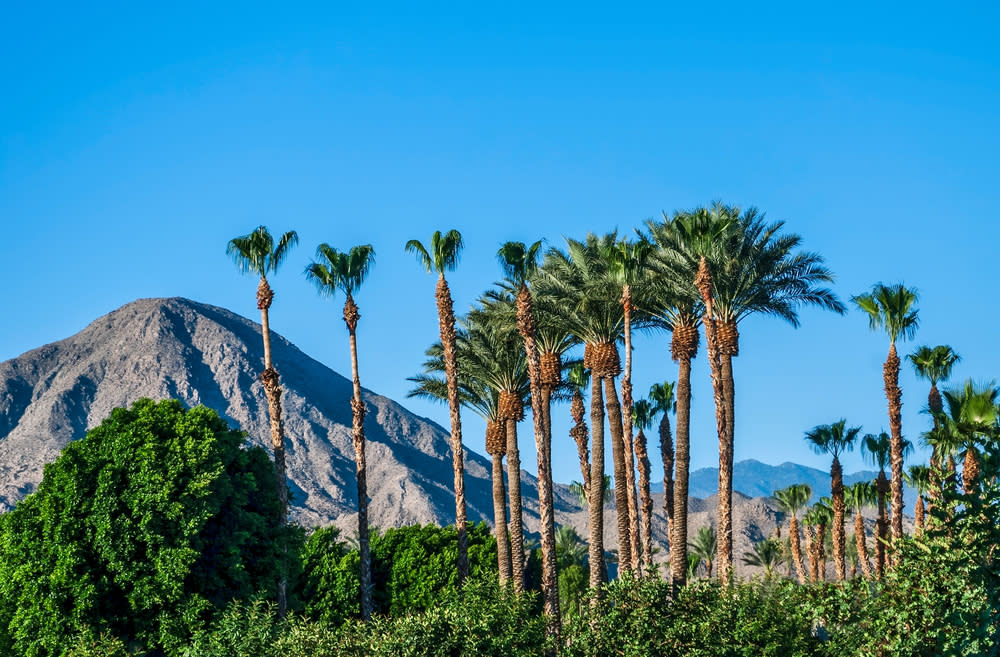More from Palm Springs
Main Menu
- 00:00
- 06:00
- 12:00
- 18:00
- 23:00
Palm Springs : Next 24-Hour Weather
Today - 24th April 2025
Sunrise 06:04
Sunset 19:25
Tomorrow - 25th April 2025
Sunrise 06:04
Sunset 19:25
Holiday Weather Now
Sorted by popularity:
Updated at 08:00 GMT
-
Temp feels like18°C65°F
-
Length of day13h 19m
-
Pressure29" (1010 hpa)
-
Visibility16 km (9miles)
-
Wind speed14 km/h
Sunrise 06:05
Sunset 19:24
-
Temp feels like:
18ºC (65 ºF)
-
Length of day:
13h 19m
-
Pressure:
29" (1010 hpa)
-
Visibility:
9 miles (16 km)
-
Wind speed:
14 km/h
Palm Springs has a desert climate with high temperatures, brilliant sunshine and low rainfall year round. Palm Springs is also an incredibly windy location as the valleys in the surrounding mountains channel wind into the area. Winds can easily reach up to 60 mph and sometimes whip up sandstorms.
Palm Springs sits in the south of California, east of Los Angeles. Having been made habitable by the super-rich with palms and golf courses, its extreme climate is now one of the main attractions of the city.
Summer, from May till October, is unreasonably hot and invariably sunny. The average high temperature gets up to 31°C in May and continues to work its way up the 30s to 39°C in July. August is not much better at 38°C. It then begins to cool and gets down to a still scorching 30°C in October. This is the desert and thereâs little getting away from the heat. The peak months are uncomfortable to say the least and can see temperatures in the mid 40s. The bone dry humidity levels allow for a massive drop in temperature at night time. At the beginning and end of the season this can mean refreshing lows in the mid teens while for the rest of the season it generally stays around 20°C. While the average low is 23°C in July and it can be hotter, the low humidity helps to make this more pleasant.
Rain might as well be a myth in the summer; there are rarely even enough clouds to hide the sun for a moment or two. Sunshine levels are high throughout the season, peaking in July at twelve hours per day.
Winter, from November till April, has hot days and cold nights. January is the coldest month with an average high of 19°C and an average low of 4°C. In the surrounding months day time highs still get into the low 20s and the very beginning and end of the season see perfect levels of heat in the mid 20s. Evenings and night times are always cold and between December and February frosts can occur. This is technically the rainy season but rainfall remains very low, falling in heavy showers on around four days per month. It is overcast more often in this season but there are still eight hours per day on average increasing to ten by the end of the season.
Palm Springsâ climate is owed to the mountains that rise up around it. These block rain-bearing winds creating a rain shadow and so the development of a desert. The lack of rain means an absence of humidity and this can be thanked for the cooler night times while also blamed for the searing daytime heat, as can the isolation from a large body of water which would help to moderate these extreme temperatures.

















